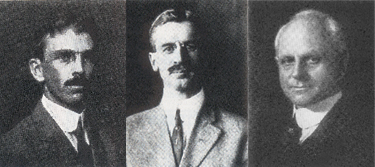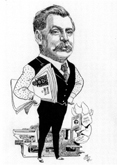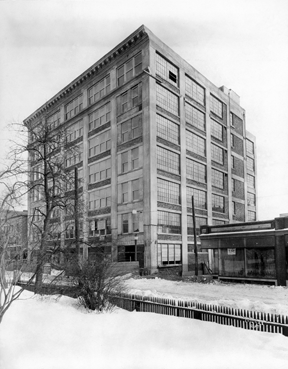Always Stay in the Loop
Want to know what’s new from Davis? Subscribe to our mailing list for periodic updates on new products, contests, free stuff, and great content.
Davis Press was founded in Worcester, Massachusetts, at the turn of the century, and its president was Gilbert Gates Davis. He and Fred Daniels, supervisor of drawing for the City of Worcester, wanted to create a periodical that would help art teachers develop and use art curricula. Daniels, along with Henry Turner Bailey, state agent for the Promotion of Industrial Drawing, and James Hall, supervisor of drawing for the City of Springfield, created the Applied Arts Guild. Gilbert Davis agreed to provide the means to publish The Applied Arts Book (now known as SchoolArts Magazine), and the publishing arm of Davis Press was born.

Founding members of The Applied Arts Guild: James Hall, Supervisor of Drawing for Springfield, Massachusetts, and associate editor of SchoolArts from 1913–15; Fred Hamilton Daniels, Supervisor of Drawing for Worcester, and editor of SchoolArts from 1901–3; Henry Turner Bailey, Massachusetts Agent for the Promotion of Industrial Drawing, and editor of SchoolArts from 1903–17
Bailey, as editor, Hall, and Daniels were determined to “promote by every legitimate means the progress of sound art instruction and the development of public taste in all matters relating to the applied arts.” To this end, they published their magazine and some of the earliest American books and folios of prints designed expressly for art educators. Gilbert Davis maintained his belief in the value of their work. From its first issue in 1901, SchoolArts published and supported the most progressive ideas about the teaching of art. Ideas from many of the great minds of twentieth-century education have appeared in its pages, including Arthur Wesley Dow, Viktor Lowenfeld, and John Dewey. SchoolArts articles planted some of the first seeds for movements, such as Picture Study, Arts and Crafts, and multiculturalism.

SchoolArts published resource books; the first, by Henry Turner Bailey, was entitled The City of Refuge and appeared in 1902. Pedro deLemos, who succeeded Bailey as editor, wrote many art books, the most famous of which was The Art Teacher (1931). These books gradually became a larger portion of the business between 1900 and the 1950s, and in 1958, Davis Publications was incorporated as a separate company.
Davis began publishing textbooks in 1968 with Art for Today’s Schools, by George F. Horn. By 1980, the company was offering junior high and secondary-level texts such as Art in Your World, Art in Your Visual Environment, and Discovering Art History by authors such as Gerald F. Brommer, Joseph A. Gatto, and Albert Porter.
During the 1980s and 90s, the definition of a “textbook program” gradually expanded to include new technology and multimedia resources, such as overhead transparencies, videos, laser disks, CD-ROMs, and DVDs. Davis steadily broadened its offerings to respond to these new technologies and has remained a leader in the field as a result.
Davis acquired Rosenthal Art Slides in 1995 to offer customers an even greater range of choices and moved its Chicago staff and operations to Worcester. The new division was renamed Davis Art Slides, and is now known as Davis Art Images, as digital images have joined slides in general use at the secondary and college levels.
In early 2002, in its 101st year of operation, Davis again broke new ground by offering Teaching Art Online, its first online learning professional development course, to 25 students from as nearby as Boston and as far away as Belgium.
Today, Davis Publications remains a family-owned, independent publisher of outstanding materials for teachers and students of the visual arts. We’re proud of our long history of service to a single field, and dedicated to helping the visual arts survive and thrive in schools across the United States and around the world.
Much of this history has been excerpted from “The Mission Continues . . . ” by Wyatt Wade, from the September, 2001, issue of SchoolArts.

In the early 1920s, three printing companies combined forces to build The Printers Building. They believed it would be more efficient to have binders and printers in the same facility and product could shift between the floors. The Printers Building was also one of only two buildings designed to withstand the weight of heavy presses.
Worcester, known locally as the Heart of the Commonwealth, is a city of 173,000 located approximately 45 miles west of Boston, Massachusetts. Established as a town on June 14, 1722, and as a city on February 29, 1848, Worcester is a dynamic small city with a fascinating past and a vibrant future. Check out more about what makes our city great at WorcesterHistory.org.